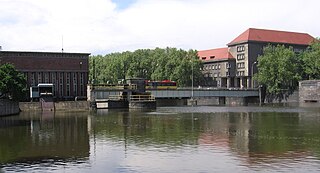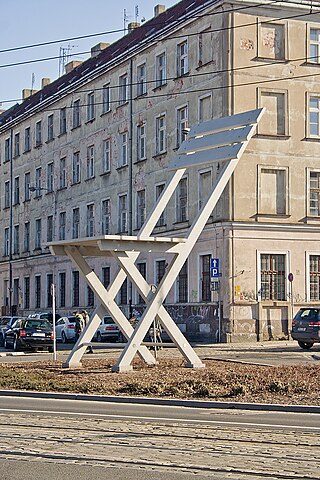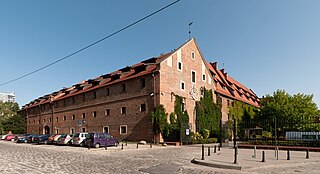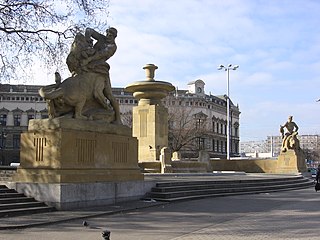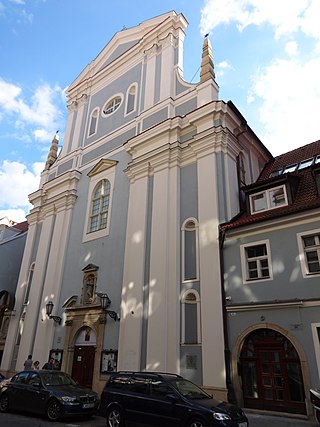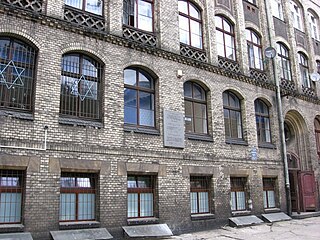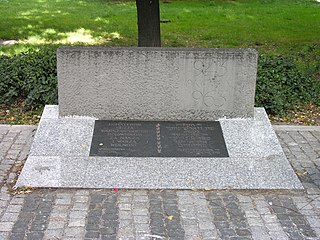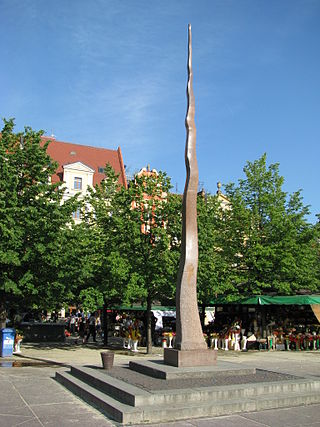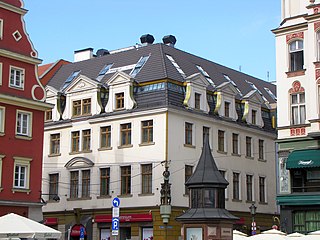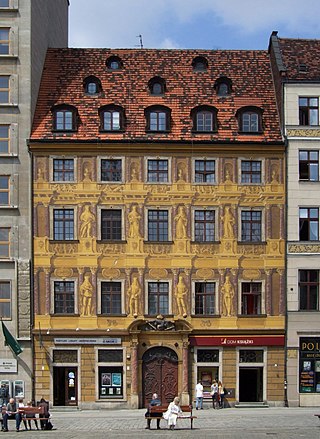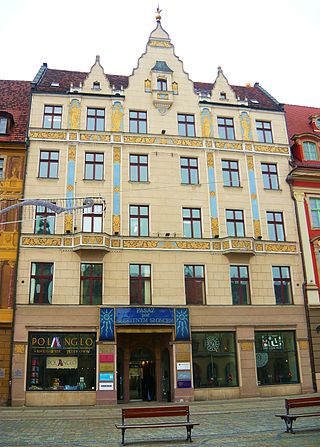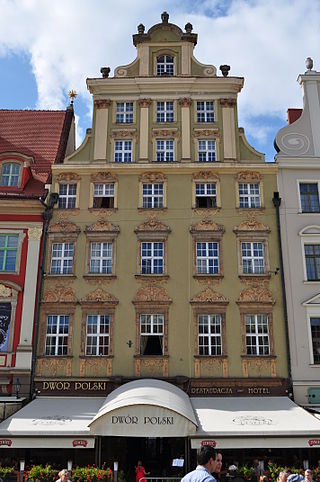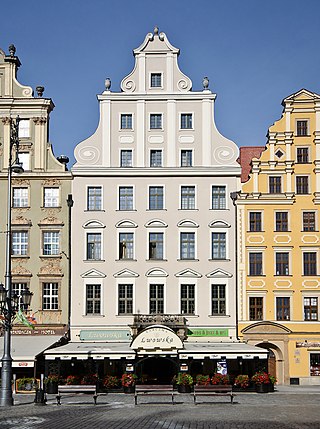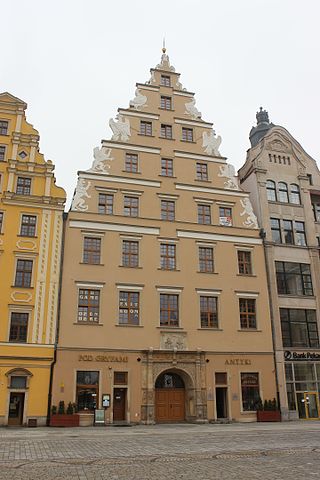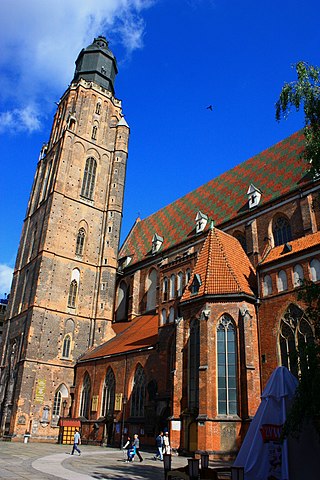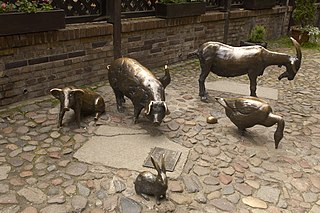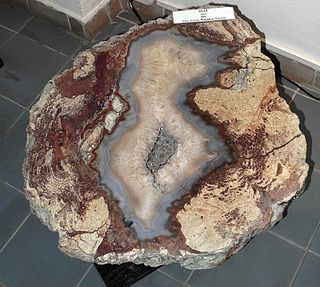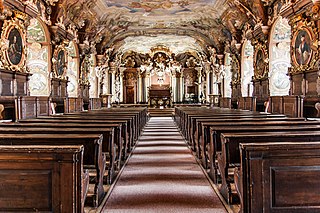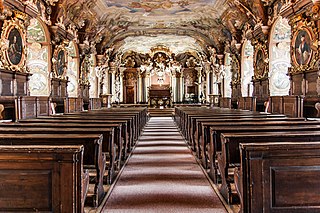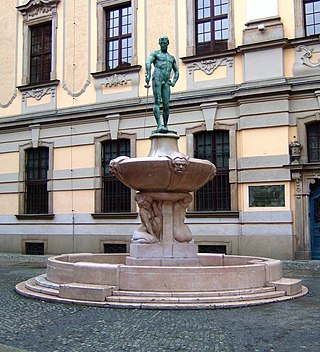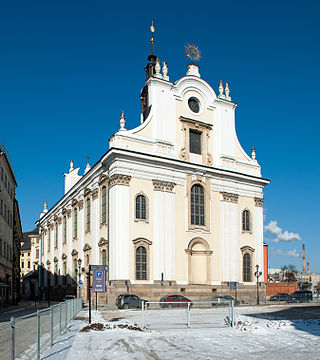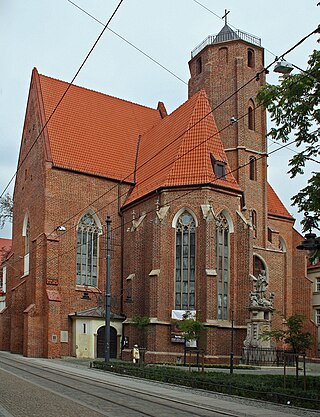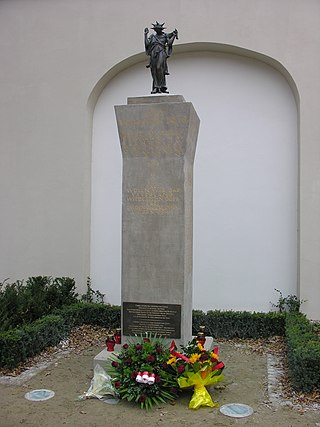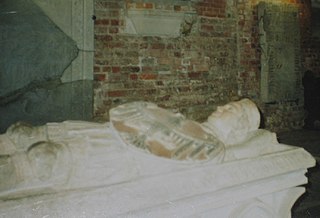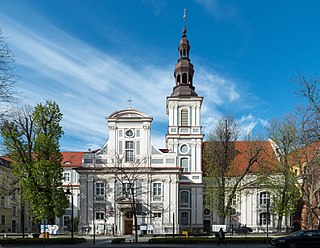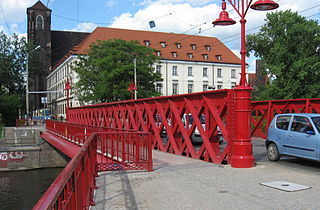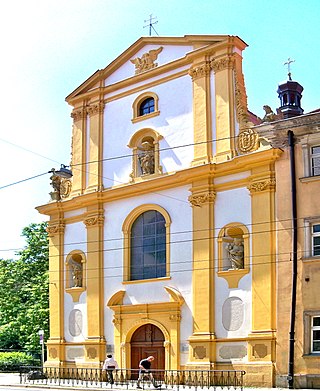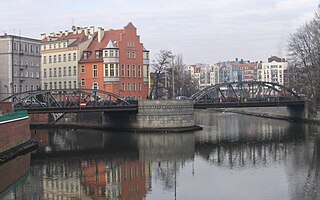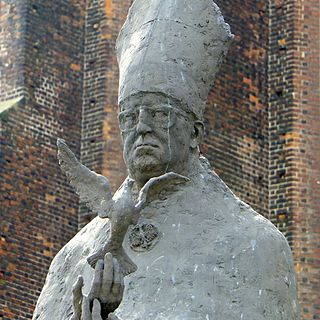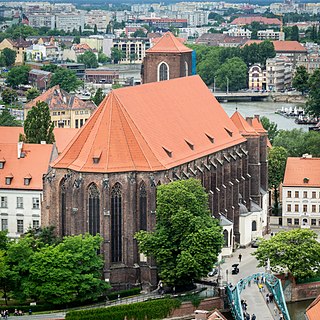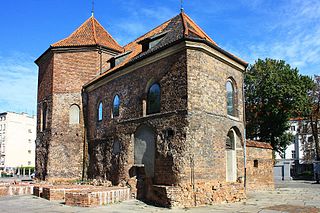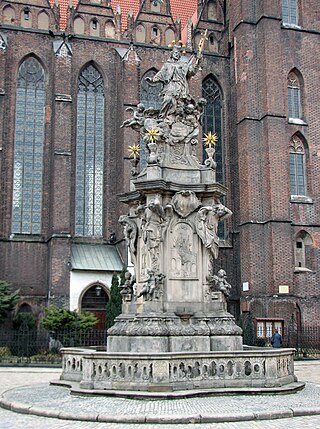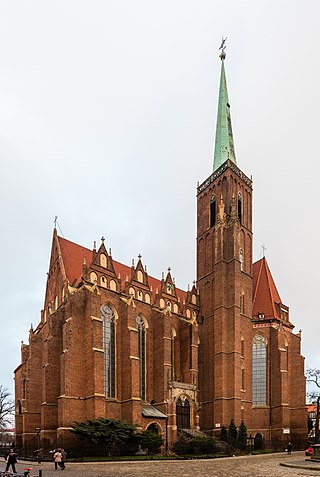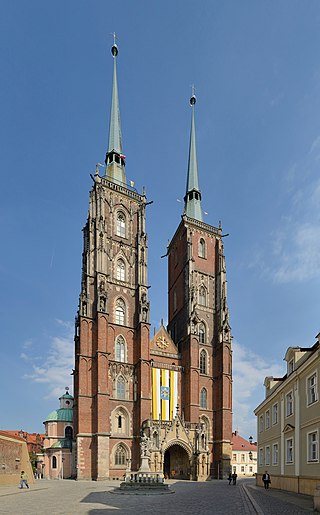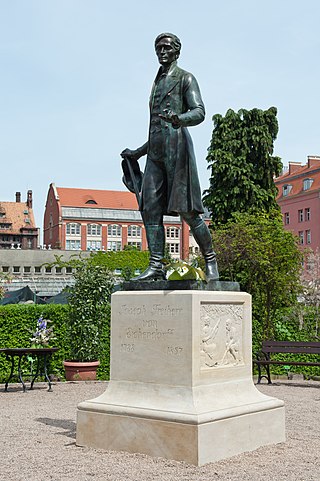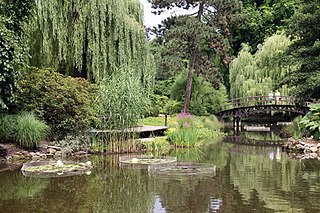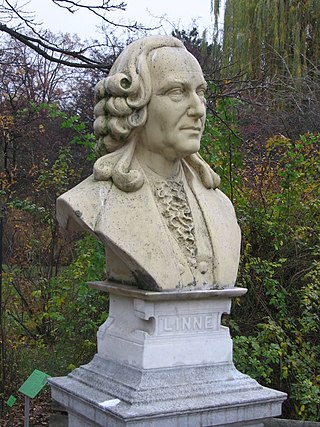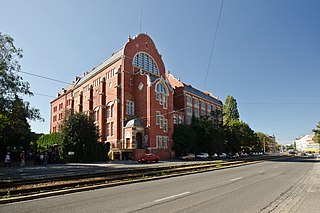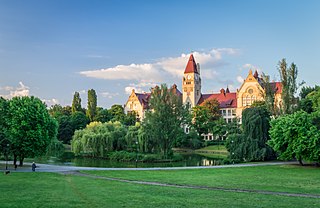Self-guided Sightseeing Tour #3 in Wrocław, Poland
Legend
Tour Facts
9.1 km
129 m
Experience Wrocław in Poland in a whole new way with our self-guided sightseeing tour. This site not only offers you practical information and insider tips, but also a rich variety of activities and sights you shouldn't miss. Whether you love art and culture, want to explore historical sites or simply want to experience the vibrant atmosphere of a lively city - you'll find everything you need for your personal adventure here.
Individual Sights in WrocławSight 1: Jaz Wrocław II
Wrocław II Hydroelectric Power Plant Weir – a weir located in Wrocław on the Odra River, more precisely on its branch, the so-called Northern Oder, as part of the Wrocław Water Junction.
Sight 2: Krzesło
Chair – an outdoor sculpture by Tadeusz Kantor standing at the intersection of Rzeźnicza Street and Nowy Świat Street in Wrocław. The sculpture was one of the projects for the urban space prepared on the occasion of the Wrocław '70 Visual Arts Symposium. Another sculpture, created in Wrocław according to the designs from the Symposium, is the Arena made according to the design of Jerzy Bereś.
Sight 3: Muzeum Militariów
The Military Museum in Wrocław is one of the seven branches of the City Museum of Wrocław. Together with the Archaeological Museum, it is located in the complex of buildings of the medieval Municipal Arsenal, also known as the Mikołajski Arsenal, located at 9 Cieszyńskiego Street. The museum occupies two wings of the Arsenal, and the exhibitions stretch over 3 floors.
Sight 4: Muzeum Archeologiczne
The Archaeological Museum in Wrocław is one of the seven branches of the City Museum of Wrocław. Together with the Military Museum, it is located in the complex of buildings of the medieval Municipal Arsenal. In the past, the museum had other locations, m.in. at the end of the twentieth century, it was located in the Royal Palace. He specializes in the archaeology of Silesia. The mission of the Archaeological Museum is to acquire, develop and make available archaeological artefacts from Silesia. It is one of the oldest institutions of this type in Europe.
Sight 5: most Władysława Sikorskiego
Sikorski Bridge – one of the bridges over the South Oder River in Wrocław, on the axis of Podwale Street.
Sight 6: Fontanna Alegoria Walki i Zwycięstwa
The Allegory of Struggle and Victory Fountain – a fountain and sculptures (monuments) of Struggle and Victory located in Wrocław at John Paul II Square in the Old Town Promenade running along the city moat.
Sight 7: Kościół Świętego Antoniego z Padwy
Church of St. Anthony of Padua – a Roman Catholic temple at 30 St. Anthony Street in Wrocław.
Wikipedia: Kościół św. Antoniego z Padwy we Wrocławiu (PL), Url
Sight 8: Mała Synagoga
The Small Synagogue in Wrocław, shul – a synagogue located in Wrocław, at 9 Pawła Włodkowica Street, right next to the White Stork Synagogue. It is currently one of the two active synagogues in this city.
Sight 9: Pomnik Bohaterów Getta Warszawskiego
The Monument to the Heroes of the Warsaw Ghetto is a plaque commemorating the insurgents of the Warsaw Ghetto located on the Ghetto Heroes Square in Wrocław.
Wikipedia: Pomnik Bohaterów Getta Warszawskiego we Wrocławiu (PL), Url
Sight 10: Iglica
The Spire on Plac Solny in Wrocław, also known as the Small Spire – a monument located in Wrocław on Plac Solny.
Sight 11: Pod Murzynem
The Three Negro Tenement House – a historic tenement house of medieval origin, located at the intersection of 32 Kiełbaśnicza Street and 1 Ruska Street in Wrocław.
Sight 12: Kamienica Pod Siedmioma Elektorami
The Tenement House Under the Seven Electors – a Renaissance tenement house on the Market Square in Wrocław from the second half of the thirteenth century. It is characterized by rich decorations. The Habsburg eagle was placed in the tympanum. In the seventeenth century, the tenement house was called Köbersche Haus or Stellenfeldsche Haus.
Wikipedia: Kamienica Pod Siedmioma Elektorami we Wrocławiu (PL), Url, Url 0
Sight 13: Kamienica pod Błękitnym Słońcem
Tenement House Under the Blue Sun – a medieval tenement house on the Wrocław market square.
Wikipedia: Kamienica Pod Błękitnym Słońcem we Wrocławiu (PL)
Sight 14: Muzeum Pana Tadeusza
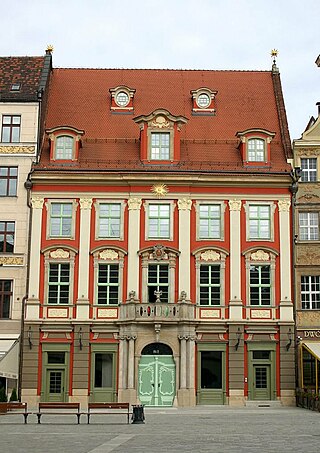
Pan Tadeusz Museum – part of the Ossolineum, presenting the Museum's collections against a rich historical and literary background. It has been operating since May 2016 in the tenement house Under the Golden Sun in Wrocław.
Sight 15: Kamienica Dwór Polski
Tenement House at Rynek 5 – a tenement house on the Wrocław market square in the Gothic-Renaissance style with late Baroque elements, known as the "Polish Manor" tenement house after the restaurant located there.
Wikipedia: Kamienica przy Rynku 5 we Wrocławiu (PL), Url, Url 0
Sight 16: Kamienica Pod Złotym Orłem
The Golden Eagle Tenement House – a tenement house on the Market Square in Wrocław, rebuilt in the Baroque style.
Wikipedia: Kamienica Pod Złotym Orłem we Wrocławiu (Rynek) (PL), Url, Url 0
Sight 17: Kamienica Pod Złotym Słońcem
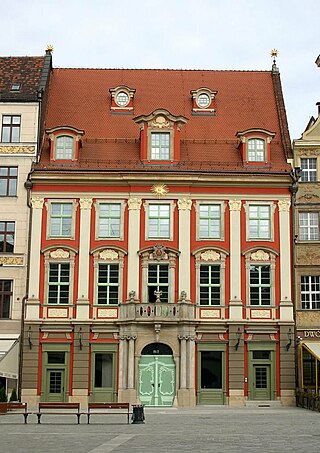
The Golden Sun Tenement House ) is a tenement house on the Market Square in Wrocław, built in the Baroque style.
Wikipedia: Kamienica Pod Złotym Słońcem we Wrocławiu (PL), Url, Url 0
Sight 18: Kamienica Pod Gryfami
The House Under the Griffins is a tenement house on the Market Square in Wrocław, built around 1300.
Wikipedia: Kamienica Pod Gryfami we Wrocławiu (PL), Url, Url 0
Sight 19: Dom altarystów Małgosia,
Hansel and Gretel – two historic medieval tenement houses at the north-west corner of the Wrocław Market Square, connected with each other by an arcade. Built most probably in the fifteenth century, they were then part of a larger group of altarist houses of the parish church of St. Elizabeth. Between the tenement houses, under the arcade, there was an entrance to the cemetery liquidated in the eighteenth century, which is reminded by the inscription in Latin. on the cartouche "Mors Ianua Vitae" –. There used to be a gate in this gate.
Sight 20: St. Elizabeth's Church
St. Elizabeth's Church of the Catholic Third Order of Saint Francis is a Gothic church in Wrocław, Poland. It is one of the most iconic structures of the city's Old Town panorama.
Sight 21: Ku czci Zwierząt Rzeźnych
Monument "In Honor of Slaughter Animals" – a group of sculptures of slaughter animals at Stare Jatki Street in Wrocław.
Sight 22: Muzeum Mineralogiczne
The Kazimierz Maślankiewicz Mineralogical Museum in Wrocław is a unit of the Institute of Geological Sciences of the University of Wrocław, at 30 Cybulskiego Street, with a branch at 22 Kuźnicza Street.
Wikipedia: Muzeum Mineralogiczne im. Kazimierza Maślankiewicza we Wrocławiu (PL), Website
Sight 23: University of Wrocław Museum
The Museum of the University of Wrocław is a museum in Wrocław (Poland) displaying many of the historical objects of the University of Wrocław.
Wikipedia: Museum of the University of Wrocław (EN), Website
Sight 24: Aula Leopoldina
Aula Leopoldina, Aula Leopoldińska – a representative, baroque hall in the main building of the University of Wrocław.
Sight 25: Fencer
The Fencer Fountain is a fountain in Wrocław located on the square in front of the University of Wrocław and one of its symbols. It was designed by Hugo Lederer (1871–1940), a professor at the Berlin Academy of Fine Arts, and was placed on University Square on 26 November 1904.
Sight 26: Kościół Imienia Jezus
The Church of the Name of Jesus in Wrocław, currently the university church at 1 University Square, is a Baroque church erected by the Jesuits in the years 1689–1698.
Sight 27: Kościół pw. Świętego Macieja
Church of St. Matthias the Apostle in Wrocław – a Gothic brick church, built on a cruciform plan, single-nave with a transept and a tower. It is located on the eastern side of Szewska Street, with the address of 17a Bishop Nankiera Square. The history of the church dates back to the first quarter of the thirteenth century. It was then built as a court chapel associated with the court (curia) of Henry the Bearded, which was located further east. This church consisted of a two-bay nave and also a two-bay, narrower and longer chancel.
Sight 28: Pomnik ofiar I wojny światowej
Monument to the victims of World War I in Wrocław, also: Monument to the fallen students and teachers of St. Matthias Gymnasium – a reconstructed monument, located in the courtyard of the Ossolineum in Wrocław.
Sight 29: Angelus
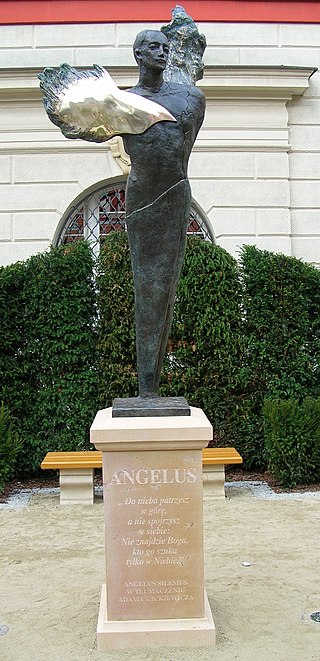
The Monument of the Angel of Silesia or the Monument of Angelus Silesius is a monument erected in Wrocław in the courtyard of the Ossolineum.
Sight 30: Mauzoleum Piastów Śląskich
The Mausoleum of the Silesian Piasts in Wrocław is located in the church of St. Clare and St. Hedwig at Nankiera Square, in the Catholic school of the Ursuline Sisters of the Roman Union, in the former main nave of the church.
Wikipedia: Mauzoleum Piastów Śląskich we Wrocławiu (PL), Url
Sight 31: Kościół pw. Świętej Klary i Świętej Jadwigi
Church of St. Hedwig in Wrocław – a Roman Catholic temple, which, together with the former convent of the nunnery of St. Clare, today belongs to the Ursuline Sisters of the Roman Union, running a Public High School here.
Wikipedia: Kościół św. Klary i św. Jadwigi we Wrocławiu (PL)
Sight 32: Domek Romański
Romanesque House in Wrocław, or House of the Ladies of Trzebnica in Wrocław, is a Romanesque villa at Plac Biskupa Nankiera in Wrocław. More precisely, it is an early-Gothic building with Romanesque elements that dates back to the beginning of the 13th century, partly reconstructed after World War II. It was the centre for the Cistercians of Trzebnica, which is why it was called the House of the Ladies of Trzebnica. Nearby, along the Kotlarska Street, were the Nowe Jatki, a medieval shopping center belonging to the monastery.
Sight 33: Kościół pw. Świętego Wincentego i Świętego Jakuba
The Cathedral of St. Vincent and St. James is a Gothic cathedral located in the Old Town of Wrocław, Poland, seat of the Ukrainian Catholic Eparchy of Wrocław. It is one the burial sites of Polish monarchs.
Wikipedia: St. Vincent and St. James Cathedral, Wrocław (EN), Website
Sight 34: Wrocław Market Hall
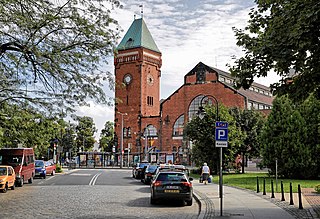
Wrocław Market Hall is a food hall in central Wrocław, Poland. Designed by Richard Plüddemann, it was built between 1906 and 1908 as the Breslauer Markthalle Nr 1, when the city was part of German Empire. The Hall was renowned for its then-innovative application of reinforced concrete trusses, which was unique in Europe at the time.
Sight 35: Sand Bridge
The Sand Bridge – an iron bridge erected in 1861 in Wrocław, over the southern branch of the Oder River, entered into the register of immovable monuments of the Lower Silesian Voivodeship. It is the initial part of the route leading from the medieval city to the north. It is part of the oldest Wrocław crossing over the Oder, the northern section of which is made up of the Mill Bridges. The bridge is relatively narrow, on the less than six-and-a-half-meter roadway there are two opposite lanes of vehicular traffic and a two-way tram line. The sidewalks are located on the outer side of the bridge girders.
Sight 36: Orthodox Church of Saints Cyril and Methodius
The Church of Sts. Cyril and Methodius is an orthodox church in Wrocław, Poland. It is located on the Sand Island.
Wikipedia: Sts. Cyril and Methodius Church (Wrocław) (EN), Website, Url, Url 0
Sight 37: Most Młyński Południowy
The Mill Bridges in Wrocław – a complex of two bridges over the branches of the Northern Oder. Bridges connect Sand Island with Mill Island and Mill Island with the right bank of the river. Before 1945, they were collectively called Gneisenau Brücke.
Sight 38: Pomnik Kardynała Bolesława Kominka
Monument to Cardinal Bolesław Kominek - a monument on the island of Piasek, at ul. Of the Blessed Virgin Mary, at the entrance to Ostrów Tumski in Wrocław.
Wikipedia: Pomnik Bolesława Kominka we Wrocławiu (PL), Url 0
Sight 39: Kościół Najświętszej Marii Panny na Piasku
The Church of St. Mary on the Sand is a Catholic church in Wrocław, in Silesia, located on the Sand Island, in the Oder River, in the heart of the city. Founded in the 12th century, it is one of the oldest Gothic churches in the country.
Sight 40: Most Tumski
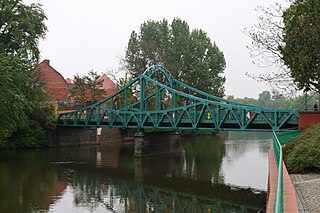
The Tumski Bridge, lit. 'Cathedral Bridge', is a steel bridge over the northern branch of the Oder in Wrocław. Constructed in 1889, it replaced an old wooden bridge to connect the Cathedral Island with the Sand Island. The bridge is open to pedestrians only.
Sight 41: Kościół Świętych Piotra i Pawła
Church of St. Peter and St. Paul – a church in the south-western part of Ostrów Tumski in Wrocław, next to the Tumski Bridge. The 14-metre-wide building is orientated, set sideways (24 m long) to Katedralna Street, and the wall of its presbytery is partly adjacent to the orphanage (Orphanotrophaeum) for noble children, erected later (1702–15), later transformed into a dormitory (currently it houses, among m.in, the Specialist Family Counselling Centre and the Adoption and Care Centre of the Metropolitan Curia, the Metropolitan Organist Study and the Wrocław station of Radio Rodzina; there was also a Academic Pastoral Ministry "under the Four".
Wikipedia: Kościół św. Piotra i św. Pawła we Wrocławiu (PL), Url, Url 0
Sight 42: Kościół Świętego Marcina
St. Martin's Church in Wrocław – a small Gothic church located in the western part of Ostrów Tumski in Wrocław. It is one of the oldest existing church buildings in Wrocław.
Sight 43: Święty Jan Nepomucen
Monument of St. John of Nepomuk – an eighteenth-century sculpture (nepomuk) by Jan Jerzy Urbański depicting John of Nepomuk, located on Ostrów Tumski in Wrocław.
Wikipedia: Pomnik św. Jana Nepomucena na Ostrowie Tumskim (PL), Url
Sight 44: Kolegiata Świętego Krzyża i Świętego Bartłomieja
Collegiate Church of the Holy Cross and St. Bartholomew in Wrocław, Poland, is a two-storey brick Gothic collegiate church on the Ostrów Tumski, considered the second most important Roman Catholic church in Wrocław. It is one of the historic burial sites of Polish monarchs.
Wikipedia: Collegiate Church of the Holy Cross and St. Bartholomew, Wrocław (EN), Url, Url 0
Sight 45: Archikatedra Świętego Jana Chrzciciela
The St. John the Baptist Archcathedral is the seat of the Archdiocese of Wrocław and a landmark of the city of Wrocław in Poland. The cathedral, located in the Cathedral Island, is a Gothic church with Neo-Gothic additions. The current standing cathedral is the fourth church to have been built on the site.
Sight 46: Joseph von Eichendorff
The Joseph von Eichendorff Monument in Wrocław is a reconstructed monument to the German poet Joseph von Eichendorff located in the Botanical Garden in Wrocław.
Wikipedia: Pomnik Josepha von Eichendorffa we Wrocławiu (PL)
Sight 47: Botanical Garden
The Botanical Garden of the University of Wrocław is a botanical garden in Wrocław founded in 1811 in the area of Ostrów Tumski. The garden was established for medical students at the local university. During the Napoleonic Wars, the garden was damaged after the city fortifications were destroyed. Part of the garden featured a branch off the Odra river and was filled in during the conflict, but has since been restored as a large lily pond. It is the second oldest garden of this type in Poland, after the garden in Kraków. In 1974 it was listed as a protected monument in Lower Silesia, since 1994 it was included in the protected historical city center.
Wikipedia: University of Wrocław Botanical Garden (EN), Website, Url
Sight 48: Karol Linneusz
Monument to Carl Linnaeus in Wrocław – a monument commemorating the person of Carl Linnaeus. Its author was Albert Rachner. It was built in 1871 and unveiled on 23 May 1871. The founder of the monument in 1870 was Moritz Wesel. The monument has the form of a realistic and detailed bust placed on a pedestal – a high pedestal with classicist forms. In relation to this type of monuments, the term "portrait monument" is used.
Sight 49: Museum of Natural History
The Museum of Natural History, University of Wrocław is a large natural history museum at the University of Wrocław, in Wrocław, Poland.
Wikipedia: Museum of Natural History, University of Wrocław (EN)
Sight 50: Park Stanisława Tołpy
Stanisław Tołpa Park – a city park located in Wrocław, in the area of the following streets: Nowowiejska, Cardinala Stefana Wyszyńskiego and Bolesława Prusa. The name of the park, commemorating Stanisław Tołpa, was given in 2005.
Share
Disclaimer Please be aware of your surroundings and do not enter private property. We are not liable for any damages that occur during the tours.
GPX-Download For navigation apps and GPS devices you can download the tour as a GPX file.
